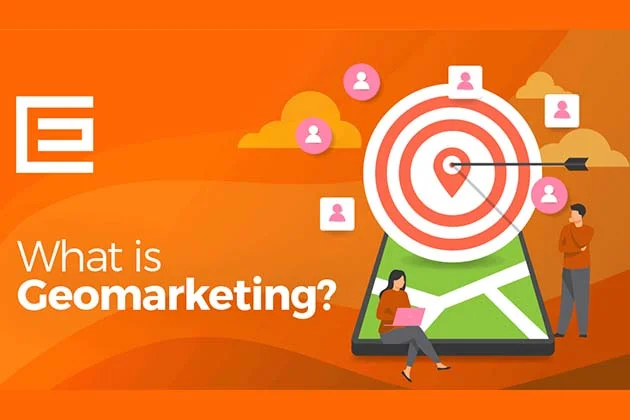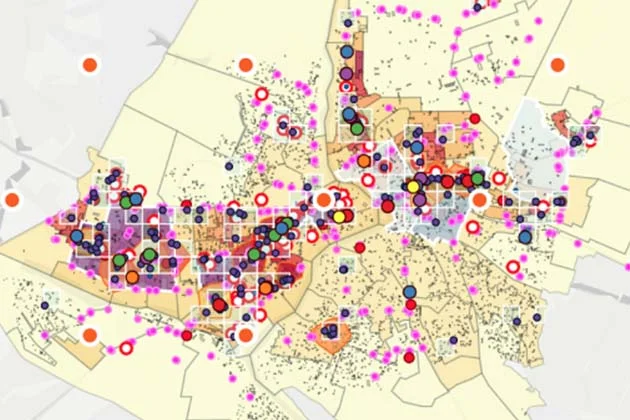There’s no doubt that retail mapping is becoming more and more popular. But what is Geomarketing, and why do so many businesses believe it’s the key to success? Geomarketing is the process of using geographic data to make marketing decisions. This can include using GPS data to track customers, or analyzing demographic information to target certain areas. By using Geomarketing techniques, businesses can improve their customer targeting and increase their profits. In this blog post, we will discuss the benefits of Geomarketing for retail businesses!
What is Geomarketing
Geomarketing is the process of using location-based data to understand and improve marketing efforts. By understanding how customers interact with the physical world, businesses can more effectively target their advertising, optimize their operations, and attain a deeper understanding of customer behavior. Geomarketing relies on a variety of data sources, including GPS data, consumer surveys, and social media data. This data is then analyzed to reveal patterns and insights that can be used to improve marketing strategies. For example, it can be used to identify hot spots for foot traffic, target Advertising spending more effectively, or optimize delivery routes. Ultimately, Geomarketing provides a powerful tool for businesses to gain a competitive advantage in today’s hyper-competitive marketplace.
What is Retail Mapping
Retail mapping is the process of creating a visual representation of a retail environment. This can include anything from individual store layouts to the entire shopping center design. The purpose of retail mapping is to help retailers better understand their customers’ shopping patterns and preferences. This information can then be used to improve the overall shopping experience by optimizing store layout, product placement, and promotions. Retail mapping can be performed using a variety of methods, including surveys, customer interviews, and heat mapping technology. By taking the time to understand the nuances of retail mapping, retailers can gain valuable insights that will help them better serve their customers.
What is Geomarketing in Retail Mapping
Geomarketing in retail mapping is the study and practice of using geographic data to inform marketing decisions. Retailers use Geomarketing to understand customer behavior, assess marketing opportunities, and optimize store locations.
Geomarketing relies on retail analytics and location solutions like Carto to make better-informed decisions about where to open new stores, how to allocate marketing resources, and which products to stock at each location. By understanding customer purchasing patterns, retailers can identify trends and tailor their strategies accordingly.
Geomarketing has become an essential tool for retailers in today’s highly competitive market. With the use of this technique, retailers can obtain a granular understanding of their customers and make decisions that will lead to long-term success.
How to Get Started With Geomarketing for Retail Mapping
There are a few things you need to get started with Geomarketing for retail mapping. First, you need to have a good understanding of your customer base. Who are they? What do they like? What do they need? Once you have a good understanding of your target market, you can start to look at where they live, work, and play.
Second, you need to have data that tells you about the locations of your customers. This data can come from a variety of sources, including surveys, customer databases, social media data, and even GPS data from mobile devices.
Third, you need to have a way to map this data so that it is easy to understand and visualize. There are a number of software programs that can help you with this, including Google Maps, Bing Maps, and MapQuest.
Finally, you need to interpret the data so that you can make decisions about where to open new stores, how to target your marketing campaigns, and more. This is where a good understanding of market research comes in handy.
Once you have all of these things in place, you are ready to start using marketing for retail mapping!
Benefits of Using Geomarketing in Retail Mapping
In today’s retail landscape, Geomarketing has become an essential tool for mapping out store locations, analyzing customer behavior, and driving sales. Here are ten benefits of using this technique in retail mapping:
- Geomarketing can help you understand your customers better by providing insights into their demographics, buying habits, and preferences
- It can help you identify potential new store locations that are likely to be successful
- It can help you improve the performance of existing stores by identifying opportunities for optimization
- Geomarketing can help you drive sales through targeted marketing and promotions
- It can help increase foot traffic to your stores through the effective placement of advertising and signage
- Geomarketing can help you reduce costs by identifying areas where store density is low and customer demand is high
- It can help you improve customer loyalty and retention through targeted loyalty programs and personalized service
- Geomarketing can help you protect your brand by monitoring competitor activity and understanding market trends
- It is helpful in growing your business by providing insights into new markets and expansion opportunities. By taking into account the geographical location of customers, businesses can more effectively target their marketing and advertising efforts. Additionally, geomarketing can be used to identify potential new markets and to better understand the purchasing habits of customers.
- Geomarketing can help businesses to assess the effectiveness of marketing campaigns
- Geomarketing can help businesses to track customer movements
- It can help businesses to improve employee productivity.
- It can help businesses to reduce carbon emissions
If you’re not already using Geomarketing in your retail mapping efforts, it’s time to start!
Drawbacks of Using Geomarketing in Retail Mapping
There are some drawbacks to using geomarketing in your retail mapping strategy. Here are ten of them:
- Geomarketing can be expensive. In order to get accurate data, you need to purchase high-quality software and services. This can quickly add up, especially if you’re a small or medium-sized business.
- Geomarketing requires a lot of data. Not only do you need data on your customers, but you also need data on potential customers. This can be difficult and time-consuming to collect.
- This technique can be complex. The software and algorithms used in geomarketing can be complex and difficult to understand. This can make it hard to create effective campaigns.
- It is constantly changing. Technology and customer behavior are always changing, so you need to keep up with the latest trends in order to be successful. This can be difficult and expensive.
- Geomarketing is not always accurate. Even with the best software and data, there is no guarantee that your campaigns will be successful. Geomarketing is a tool, not a magic bullet.
- Geomarketing requires a lot of time. In order to create effective campaigns, you need to spend a lot of time planning, designing, and testing. This can be difficult to do if you have a limited budget or staff.
- It is not always legal. There are some countries where Geomarketing is illegal or restricted. This can make it difficult to use in certain markets
- Geomarketing can be ethically questionable. Some people believe that Geomarketing is intrusive and unethical. This can make it difficult to use in certain situations
- Geomarketing can be misused. If not used properly, Geomarketing can be ineffective or even harmful. It’s important to use Geomarketing wisely and with caution
As you can see, there are some drawbacks to using this technology in your retail mapping strategy. However, there are also many benefits. Geomarketing can be a powerful tool if used correctly. If you’re considering using Geomarketing, weigh the pros and cons carefully before making a decision.
The Future of Geomarketing in Retail Mapping
As the retail landscape continues to change, so too must the way that retailers map their locations. It is an important tool for retail businesses and one that is constantly evolving. Here are a few ways that it will continue to shape the future of retail mapping:
There Will be a Greater Focus on Personalization
As consumers become more and more accustomed to personalized experiences, they will expect nothing less from retailers. It can be used to create highly personalized shopping experiences by taking into account things like a customer’s location, demographics, and even past purchase history.
Data Analytics Will Play a Bigger Role
The data collected from geomarketing campaigns will become increasingly important as retailers look to gain insights into their customers. By analyzing this data, retailers will be able to better understand customer behavior and needs. This, in turn, will allow them to create more targeted and effective marketing campaigns.
Location-Based Services Will Become More Prevalent
As technology advances, location-based services (LBS) are becoming more and more commonplace. Retailers can use LBS to provide real-time information to customers about things like product availability, store hours, and special offers. This is an incredibly powerful tool for driving foot traffic and increasing sales.
Conclusion
It’s a fact this will continue improving the retail mapping industry and it will continue to evolve and grow in popularity. Hence it’s important for businesses to implement this technology and stay ahead of the curve.











